Review: 2012 Hyundai Veloster
Recently a video surfaced from the Frankfurt Auto Show, depicting Volkswagen CEO Martin Winterkorn puzzling over the remarkable quality of Hyundai’s latest Golf competitor, the European-market i30. But if Herr Professor Dr. Winterkorn seemed perturbed, and he certainly did, it wasn’t simply because of one car, even one aimed at the heart of his empire. The i30 is simply the latest in a string of strong Hyundai products that are rapidly erasing memories of the brand’s budget-basement roots. In an industry that likes to compare itself to the fashion business, Hyundai is hot. So much so, in fact, that TTAC readers are likely beginning to tire of hearing about it.
And when brands are hot, especially on the strength of their mass-market offerings, the next logical step is to build a halo car that reflects the values that made them so popular. But Hyundai’s unconventional positioning, selling everything from a $15,000 Accent to a $60,000 Equus, and its mandate to reflect “Different Thinking” mean a traditional halo car is out of the question. Enter the Veloster. Or, as Hyundai calls it, the “reverse halo car.”
Before we get into the car itself, let’s quickly deal with Hyundai’s confounding concept of the “reverse halo.” When asked by Wards Auto if he would consider building a GT-R or Corvette fighter, Hyundai Motor America CEO John Krafcik said
I’m not saying we’d never do one, but it wouldn’t be a priority of mine. You define your brand as much by what you choose not to do as what you do. We’ve got a laser-like focus on leading the industry in fuel efficiency.
Would it be cool and fun to have a halo performance car? Yeah. But it would be expensive, and what would it really do for us?
So, to truly reflect its brand values, a Hyundai halo car would have to be efficient. To properly accent (so to speak) Hyundai’s marketing tagline, it would have to be “different” (an affordable halo car?). And to show off Hyundai’s technological prowess (to say nothing of giving Herr Winterkorn’s ulcer an honest workout), it would have to have a direct-injected engine and an available dual-clutch transmission, the euro-tech confections that VW insists Americans don’t care about. The result: an Accent-based, 40 MPG, hatchback-coupe with three forward-hinged doors that’s nothing like anything else on the market. And whatever else might be said about the Veloster, its entire concept as a halo that shines from the bottom of the model range upwards represents a bold step by the upstart Korean company (if one borrowed from the Kia Soul).
And like every good halo, the Veloster is unabashedly extroverted in its exterior styling. It’s got the motorcycle-helmet proportions of its Scion tC competitor, but brings a more compact bulldog stance and the visual dynamism of Hyundai’s “fluidic sculpture” design language to the party. Pure coupe from the driver side, the third door gives the passenger side its own unique look, while the rear offers the most striking vista of them all with its chrome center exhaust, rounded glass hatch and Ferrari-font “Veloster” badge. Love or hate the looks, it’s tough to deny that it is simultaneously recognizable as a Hundai and yet far more expressive than any other Hyundai on the market. Reverse halo mission accomplished.
Slide into the driver’s seat, and Herr Winterkorn will be reaching for the Tums again. For all the praise its products do receive, Hyundai still doesn’t get enough credit for putting out some of the most solidly-assembled interiors at the lower price points, and the Veloster carries that banner with pride. The interior’s isn’t mind-blowingly glamorous, although it is a step up from the Accent design-wise, but from the dash assembly to the knobs, everything is built with reassuring solidity and quality materials. Almost every affordable car’s interior has at least a handful of elements that betray the inevitable cost-cutting, but in the Veloster I could literally only find two points of criticism. The silver plastic door pulls were supposedly inspired by a sport bike frame, but their lack of structural integrity clearly wasn’t. Also, the door latch handles felt cheap compared to the rest of the interior. For a car that starts just over $17,000, that’s quite the achievement… and one Herr Winterkorn’s latest round of similarly-pried products don’t come close to reaching.
The centerpiece of the Veloster’s cockpit is the standard seven-inch touchscreen which can plugged into an iPod or xBox and used as a movie or video game display, or play host to the optional navigation system. But none of these reasons explain why it’s standard in Hyundai’s “reverse halo” car. Just as the Veloster is the first Hyundai to offer a dual-clutch transmission, it’s also the first model to offer the brand’s full suite of OnStar-alike telematics services. Hyundai expended the breath of many PR people in hopes of generating some enthusiasm for the three packages of services, but they seem like they will appeal far more to older buyers, who prefer the link to a “real person” rather than wrangling with a device, than to the average Veloster buyer. And none of them elevate the genre beyond the services already offered by OnStar. Furthermore, some of the Veloster’s other tech toys, like the Gracenote voice-activated mp3 management system didn’t work easily or intuitively enough to get excited about (although the optional Dimension audio system sounded great).
But who cares about tech toys? After all, we’re talking about a sporty coupe that has 138 HP to move between 2,600 and 2,800 lbs (depending on trim and transmission) of car… the real question is “how does it drive?” And the truth is that it’s nowhere near as exciting as the spec sheet might have you believe. To begin with, the engine doesn’t feel as powerful as you’d expect, thanks to the core brand value of “fuel economy leadership.” The engine feels remote, short on torque, overly throttle-mapped and generally lacks the directness that make even an underpowered car fun to drive. And that’s the weird thing: especially with the manual transmission, there’s certainly enough power to not only stick with traffic but even have some fun on a back road… the engine simply has no personality, no desire to push. It hints at a promising growl when you open it up through the low midrange, but the enthusiasm dies in an uninspiring thrash. But hey, nobody said 40 MPG on the highway would come free.
Speaking of fuel economy, the magical 40 MPG highway rating is only available on the manual transmission version, as the extra weight of the dual-clutch box drags the rating down to 38 MPG. Which is strange, considering the DCT seems programmed to match the engine’s tuned-for-economy flavor, and from a performance perspective, it’s a poor match for the low-torque (123 ft-lbs) engine. Meanwhile, anyone choosing the manual will likely find themselves wringing out the little mill, wrecking fuel economy in the process. Still, the manual is the clear choice for a car like this, both keeping the weight to a minimum and allowing better use of the engine’s power. Which is a pity, as this car is supposed to highlight Hyundai’s use of the latest transmission technology. And the DCT works extremely well, shifting smartly but smoothly… but again, it’s best when, like Hyundai, you value fuel economy over performance.
Out on the road, the Veloster’s chassis surprises not with its sporty response, but with its refinement. You might expect a car like this to be a blast on the twisty bits and a bear on commuter roads, but the opposite proves to be the case. Freeway cruising is far more refined and relaxed than you’d expect from a stubby B-segment coupe, as the Veloster maintains composure and comfort even across crumbling sections of Oregon highway. But when you leave the freeways and begin pushing through the tight roads that wind up the sides of the Columbia Gorge, you soon realize that the Veloster’s suspension was tuned more for ride than handling. The electric steering offers more feel than other electro-racks, but the feedback is still painfully subtle. And there’s enough vagueness and lean just off-center to make you feel like you’re piloting a larger, heavier car than you actually are. Like the engine, the chassis is hardly inept… it just lacks the directness and playful spirit that defines every fun small car ever made. And the brakes are cut from the same cloth: they work just fine, but the small pedal ha a distinctly squidgy feeling that doesn’t inspire confidence in enthusiastic driving.
An uphill stretch of road punctuated with sharp hairpins brings out the worst in the Veloster as a dynamic proposition. Lacking confidence in the brakes, you slow prematurely and then wait endlessly for the engine to develop the torque to pull you out of the corner. And in the midst of those slow, tight corners, the body roll is most pronounced and the steering is at its least tactile. It’s never a mess dynamically, but there’s no doubt that Hyundai’s chassis engineers left some jinba ittai on the table. After winding back down the hill, the road follows a river valley, flattening into rolling undulations and opening up for some faster (but still blind) corners. Here the Veloster makes the strongest case for itself as a driver’s car. Keep the engine on the boil and you can build up the pace, as the front-end bites better when loaded-up in fast corners. At this faster pace, the Veloster gels into coherent whole, flowing from corner to corner in a far more satisfying fashion. But you still can’t shake the feeling that, for such a small car, it sure doesn’t feel as lively or intuitively chuckable as you’d hope.
And here’s where Hyundai’s fresh-faced, up-and-comer status shows: anyone who has been in this industry long enough will tell you that tuning a car to the perfect balance of ride and handling takes decades of experience and institutional memory. Hyundai clearly doesn’t have that, and as a result it played it safe with the US-market Veloster , tuning it a bit too far to the side of ride comfort. And based on reviews from Old Blighty, the opposite took place in the UK-market Veloster, which appears to have been tuned too far towards the enthusiast side of the spectrum, resulting in a crashy ride. The compromise made here was probably the right one given the death of the enthusiast market in the US, but it also proves why Hyundai probably isn’t ready to go chasing the GT-Rs and Corvettes of the world.
But then, that’s why Hyundai didn’t set out to make the Veloster a true enthusiast coupe, and why Hyundai Motor America executives only roll their eyes if you ask about the 200 HP Veloster Turbo that is apparently already approved for Europe. Instead, Hyundai built a funky, distinctive and surprisingly practical little car that reflects the values it champions in this market. It may not be a born-again CRX, but it’s less gimmicky and far more refined and practical than you might expect. And, with fully-loaded examples offering navigation, a nearly all-glass roof, back-up camera, dual-clutch transmission and a grip of other goodies for just over $23,000 (base models start at about $18,000), it offers a a European-style premium subcompact flavor for relatively little money. No wonder Herr Winterkorn is worried about these guys.
Disclosure: Hyundai held the launch of the Veloster in my hometown of Portland, OR. In order to play up the “Gen Y” marketing angle, they provided three nights of free concerts and tickets to a football game at my alma mater (the University of Oregon) in addition to the usual lodging, food and drink. In other words, instead of feeling like I was tagging along on a wealthy grandparent’s vacation, as is the case on most press previews I attend, this junket felt like it was tailored specifically to me… which is a strangely flattering, if somewhat troubling feeling. Make of that what you will.
More by Edward Niedermeyer
Latest Car Reviews
Read moreLatest Product Reviews
Read moreRecent Comments
- Ajla A union fight? How retro 😎
- Analoggrotto Finally, some real entertainment: the Communists versus the MAGAs. FIGHT!
- Kjhkjlhkjhkljh kljhjkhjklhkjh *IF* i was buying a kia.. (better than a dodge from personal experience) .. it would be this Google > xoavzFHyIQYShould lead to a 2025 Ioniq 5 N pre-REVIEW by Jason Cammisa
- Analoggrotto Does anyone seriously listen to this?
- Thomas Same here....but keep in mind that EVs are already much more efficient than ICE vehicles. They need to catch up in all the other areas you mentioned.



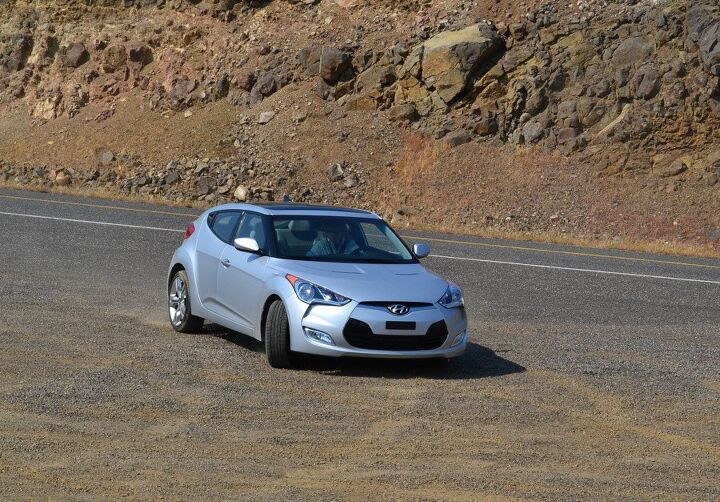
























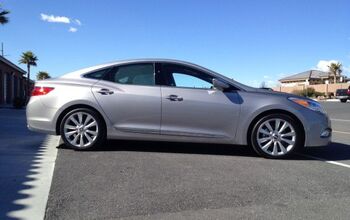
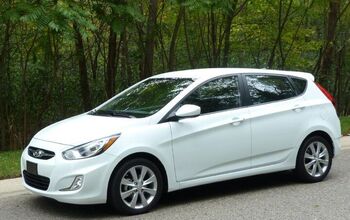
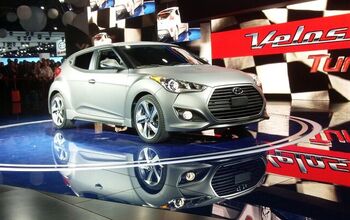
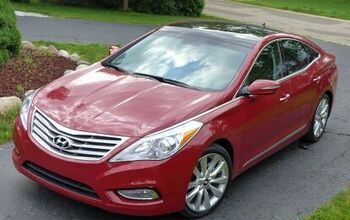
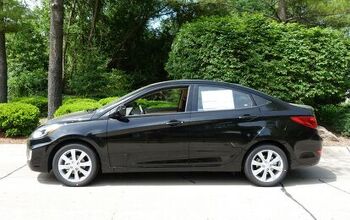










Comments
Join the conversation
This review describes a driving experience that is very similar to my elantra 06'. Its not bad but it just doesn't inspire anything either. I think my next car will be a mazda 3, manual and maybe at that time the active sky technology will be here as well.
This is a good car for normal people, and it will probably sell well. Driving enthusiasts will be bummed out. I just had a kid, so I'm forced to dispose of my 2dr MK4 GTI and find something else. She insists on nothing but a hatch, which is fine by me. The veloster qualifies. Many things about this car totally work. The styling? Sharp. It looks busier in photos. In person, you want to go rawr and claw at it. Same effect (on me) as a Genesis coupe. I don't care if it will age well. Few things do. It looks great now. The 2+1 door thing also totally works. The back seat is big enough for most creatures, and the ocean of glass makes it habitable. At brisk city speeds only a few puffs of air come in. The handling is enjoyable around town and on a straight highway. You can chuck it into a corner, and it won't roll like a pig. Bumps, railroad tracks - all fine. The clutch feel is fine, the manual shifter is fine, the automatic dual-clutch is even fine. But man, that engine lets the whole package down. I am in favour of 40mpg practical cars, but past 4500 RPM you're afraid that you're going to break it. Low-end grunt is satisfying. A note about interior styling. This is perhaps my GTI roots, or the fact that I work in the technology industry and I know what glitzy computers look and feel like in eight years. Ford's touch screen is already lame and frustrating to use. All of this Jetsons technology and space ship styling is really, really not to my taste (ditto on Ford). I find myself going back to Kia and VW today.